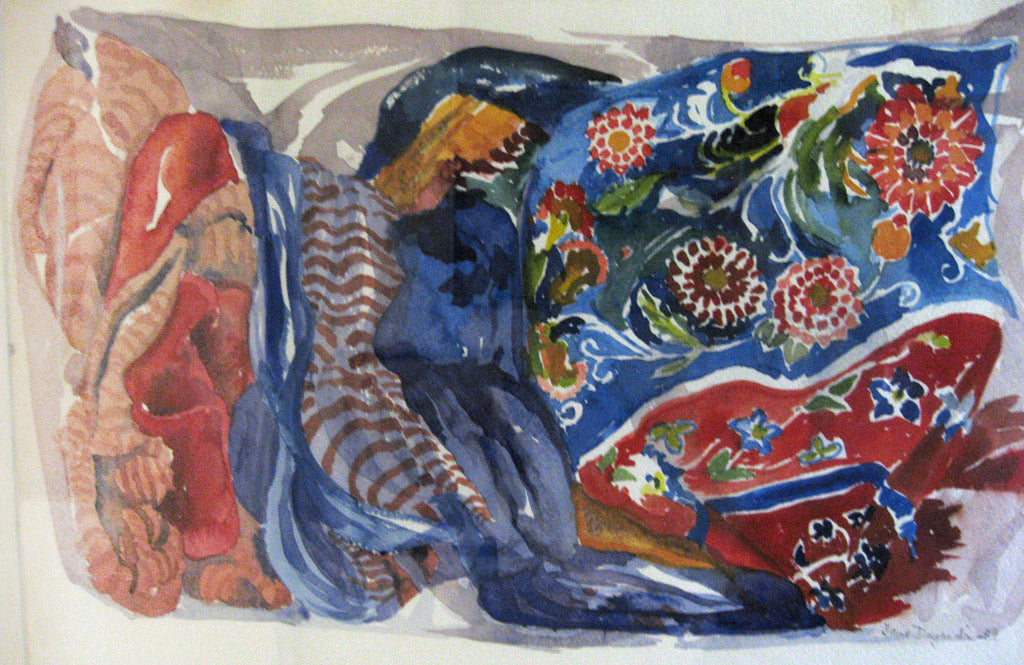Abstract still life painting offers a wonderful blend of structure and freedom. While traditional still life painting focuses on capturing the exact likeness of objects, abstract still life allows us to interpret and reimagine these subjects in new and expressive ways. Here's how I approach it, and I hope these insights inspire you to create your own unique works.
Setting up your still life

Start by choosing a subject. It can be anything—a bowl of fruit, a vase of flowers, or even a collection of random objects. The key is to select something that evokes a feeling or a mood in you.
- Gather your materials: Ensure you have a variety of brushes, a palette of colors you love, and a canvas or paper that suits your style.
- Arrange your subject: Place your objects in a way that feels pleasing to you. Consider the composition, but remember, this is just a starting point.
Loosen up your mind and brush

Before you begin painting, take a moment to relax and clear your mind. Abstract painting is as much about your internal state as it is about the external subject.
- Warm-up exercises: Do some quick, loose sketches or brushstrokes to get your hand and mind in sync. This can be as simple as scribbling on a scrap piece of paper or canvas.
- Feel the subject: Close your eyes and think about what emotions the subject evokes. Is it the vibrant energy of the flowers? The calm stability of a bowl? Let these feelings guide your brush.
Start painting

Now it's time to dive in. Remember, the goal is not to create a photographic representation, but rather to convey the essence of the subject.
- Choose your colors: Start with the colors that first come to mind when you think of your subject. Don’t worry about matching reality.
- Begin with big shapes: Use broad strokes to lay down the basic forms of your subject. Don’t worry about details yet. Focus on the overall composition and balance.
- Play with brushstrokes: Vary your brushstrokes to create texture and movement. Use quick, energetic strokes for dynamic subjects or smooth, flowing strokes for more serene compositions.
Embrace the abstract
As you paint, let go of the need to control every detail. Abstract art thrives on spontaneity and intuition.

- Deconstruct the subject: Break down the objects into shapes and lines. Let these elements interact in unexpected ways.
- Add sayers: Build up layers of paint, allowing colors to blend and overlap. This adds depth and complexity to your work.
- Highlight emotions: Use color, shape, and line to highlight the feelings the subject evokes in you. Don’t be afraid to exaggerate or distort.
Step back and reflect

Periodically step back from your painting to see it from a distance. This helps you see the overall composition and how the elements work together.
- Assess the balance: check if your painting feels balanced. Does it evoke the emotion you intended? Make adjustments as needed.
- Trust your Instincts: your intuition is a powerful guide in abstract art. Trust it and let it lead you.
Final Touches

Once you feel your painting is nearing completion, add any final touches that enhance the composition.
- Refine Key Areas: Add details or highlights to areas that need more definition.
- Balance the Colors: Make sure the colors work harmoniously together.
Embrace the process

Abstract still life painting is a journey of exploration and expression. There’s no right or wrong way to do it. The most important thing is to enjoy the process and let your creativity flow freely. Each stroke is a step in discovering your unique artistic voice.
